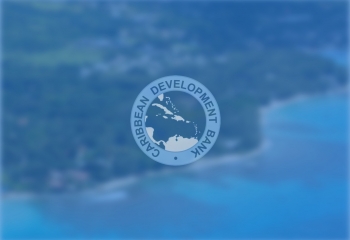BACKGROUND
Finance eligibility criteria and systems are often not suited to the unique challenges and constraints of Small Island Developing States (SIDS). These criteria depend mainly on Gross National Income (GNI) per capita as the measure of economic development in the country. However, even when small states have achieved high levels of income (GNI per capita), they can be impacted significantly by exogenous shocks. Importantly, pre-shock GNI does not capture well the needs arising from the various types of exogenous shocks. Further, some natural hazard events destroy productive and institutional capacity, amplify underlying structural vulnerabilities and limited implementation capacity, generate higher debt levels, and constrain investment in resilient infrastructure. These conditions contribute to a post-shock “vulnerability and resilience drag” that is much higher (of longer duration and higher cost) for small developing countries than for larger and more developed economies. However, conventional measures of GNI per capita do not capture this “vulnerability and resilience drag” and therefore can provide misleading signals about the financing needs for sustaining health and stability of the economy. Consequently, the use of narrow measures to access concessional finance does not contribute as effectively as intended or as possible to spur economic development.
Multilateral financial organisations have been challenged by international and regional stakeholders to think creatively about solutions and options to address SIDS’ vulnerabilities. Most SIDS are still not eligible for concessional financing because they are classified as middle- or high-income countries. There is a need to ensure that international financial systems support SIDS with structural vulnerabilities appropriately as well as those with the lowest GNI per capita. The call for the development of a globally accepted vulnerability metric as a more appropriate measure of small state economic development was first made in 1992 at the United Nations Conference on Environment and Development. The call was repeated by small states in 1994, in the Programme of Action for the Sustainable Development of small states. In 2019, during the United Nations (UN) General Assembly, members were again asked to “address limitations of an income-only assessment of development and graduation readiness”[1]. Multilateral organisations including the Caribbean Development Bank[2] (CDB), Commonwealth Secretariat (CS), and United Nations (UN) have responded to this challenge with increased effort in recent years to develop a Multidimensional Vulnerability Index (MVI).
Within this context the CDB is reviewing its strategies and the way we “do business” including financing modalities to better serve the needs of our Borrowing member countries. Work is ongoing on improving the measurement and application of the concepts of vulnerability and resilience in resource access and allocation and this concept note is another step in that process. This concept note highlights the CDB’s latest thinking on measuring vulnerability and resilience and its application to financing eligibility and the marshalling of finance for small states. The note is structured as follows: (i) section 2 briefly reviews SIDS development challenges; (ii) section 3 outlines CDB’s proposition for its vulnerability and resilience framework; (iii) section 4 provides illustrations of the impact of a shock on the development trajectory of SIDS; (iv) section 5 details the algebraic expression of the vulnerability and resilience framework and (v) the note articulates the way forward in the final section.
[2] The CDB has a long history in technical and analytical studies to understand the nature of vulnerability and policies to build resilience in the Caribbean Region. Early efforts made by the CDB to estimate the vulnerability of BMCs were completed by Crowards (2000). Since then, CDB has continued to respond to the need to understand vulnerability and resilience, including exploring innovative ways to improve its allocation of financial resources. The most recent efforts include: (i) the development of a Multidimensional Vulnerability Index (2019)[2] working paper; (ii) a package of tools[2] and resources to consider the impact of climate change on road infrastructure; and (iii) CDB financed the State of the Caribbean Climate Report, which was prepared to strengthen the decision-making processes that will be required to accelerate resilience-building efforts in the Caribbean.

